Exploring PSU Design and Testing with Cooler Master
December 17, 2014 | 12:58
Companies: #cooler-master

Exploring PSU Design and Testing with Cooler Master
Choosing a PSU for your rig was once a relatively simple choice – roughly work out the wattage you'd need for your components and likely future upgrades and then buy whichever best suited your style and budget. However, within the last decade and the last few years in particular, users are becoming more aware that simply providing power to components isn't enough. The 80 Plus certification program, launched in 2004, helped to raise awareness about efficiency, especially as different levels (e.g. Bronze, Silver and Gold) were added in 2008. However, efficiency is still only another small part of the story. A proper power supply also needs to be able to supply constant voltages under any load level with minimal ripple (also known as noise). Thankfully, the PSUs of most leading manufacturers now do, but cheap units with low quality components inside may fail and put your entire system at risk in the process. PSUs without the ability to operate within specific electrical guidelines can damage components and at their worst can even be fire hazards.Testing power supplies effectively and properly is not easy or cheap, but it is important for the reasons outlined above – it's why you'll find so many graphs and figures in our latest PSU roundups. During our time at Cooler Master's new HQ in Eindhoven, we were lucky enough to sit in with René Grau, technical marketing manager, for a PSU testing session. He took us through the testing process and the professional equipment needed for it, which costs upwards of 50,000 Euros. All PSU models produced by Cooler Master have to be checked for quality using the lab gear. Of course, Cooler Master can also use it to keep an eye on the competition, though the focus is on quality control and fault checking of its own products.
When testing PSUs, there are a number of standards to bear in mind. First, and most important, is the Intel ATX PSU design guideline, which specifies required and recommended attributes for PSUs to meet, including certain electrical characteristics such as what output voltages and ripple levels are acceptable. Then there's the 80 Plus program, which defines PSU efficiency at various load levels. For PSUs sold in the EU, there's also new ecoPSU regulations as defined by EU Commission Regulation No. 617/2013, which came into effect on 1 July 2014. Certification for the ecoPSU program is also based primarily on efficiency, as well as power draw in standby, which must be below 0.5W. Full certification also requires a random retail sample to pass testing, not just a manufacturer selected one. The ecoPSU label also includes a unique URL (and optional QR code) to give consumers quick and easy access to the test results, which include voltage outputs as well.
Cooler Master currently has three main lines of power supplies. At the bottom of the product stack is the B series. This range, available in 500W, 600W and 700W, has just been upgraded to ver. 2, and these brand new PSUs are the first in the world to pass the ecoPSU certification (pending the results of random retail samples), meaning they average 85 percent efficiency at 50 percent load. This series does not exist in the US, and as such it accepts a smaller range of voltage inputs (200-240 VAC), which helps keep the cost down. For the mid-range, there's the GM series (550W, 650W and 750W) which is semi-modular and 80 Plus Bronze rated – 88 percent efficient at 50 percent load. Finally, there's the enthusiast V series, split between semi-modular models (550W, 650W, 750W) and the fully modular (850W, 1,000W, 1,200W). These use 100 percent Japanese capacitors and are all at least 80 Plus Gold rated; the flagship 1,200W is 80 Plus Platinum. Interestingly, the break in the cables in modular PSUs introduces extra resistance, meaning even more fine tuning is needed to maintain high efficiency.
All Cooler Master PSUs use a single 12V rail. There is simply a higher demand for this type of PSU compared to multi-rail variants, and single rails are considered best for overclocking as well. It's also better for sharing the load between the components that need it, and there's no risk of overloading a single rail with a particularly demanding graphics card, for example. Electrical performance is also sub-optimal unless you are deliberately using all available rails, which would add cable clutter, though this performance variance is admittedly unlikely to have any impact or be noticed outside of a lab.
In terms of what you can expect of Cooler Master's PSUs in the future, we aren't able to share too much. However, Cooler Master did confirm to us that it is working on a digital power supply. Much like Corsair's digital PSUs, it will enable software-based control of voltages and other aspects of your power supply.
Since Cooler Master itself is not an OEM of power supplies, we asked how much say the company has in its PSU designs when it outsources the manufacturing. The answer, simply, is a lot. While the work is outsourced to various factories, the design is precisely controlled using a datasheet of what's expected. Cooler Master leases entire production lines and has its own staff members checking quality, ensuring it has a high degree of control over the process.

MSI MPG Velox 100R Chassis Review
October 14 2021 | 15:04

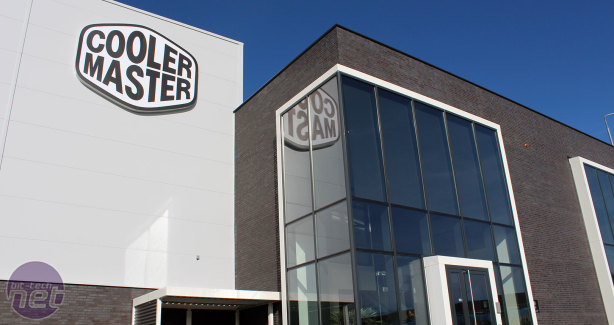
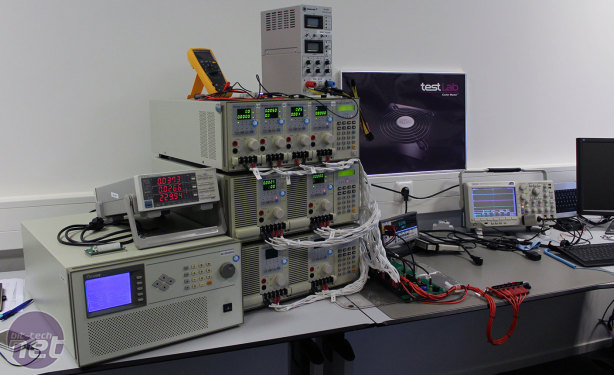
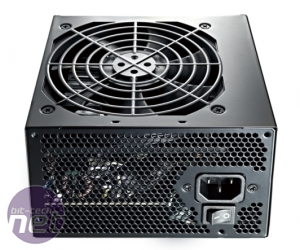

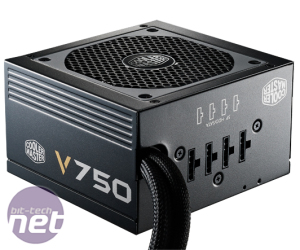
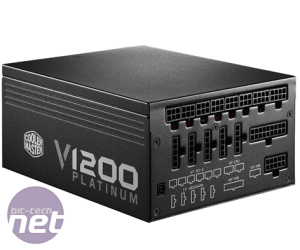







Want to comment? Please log in.